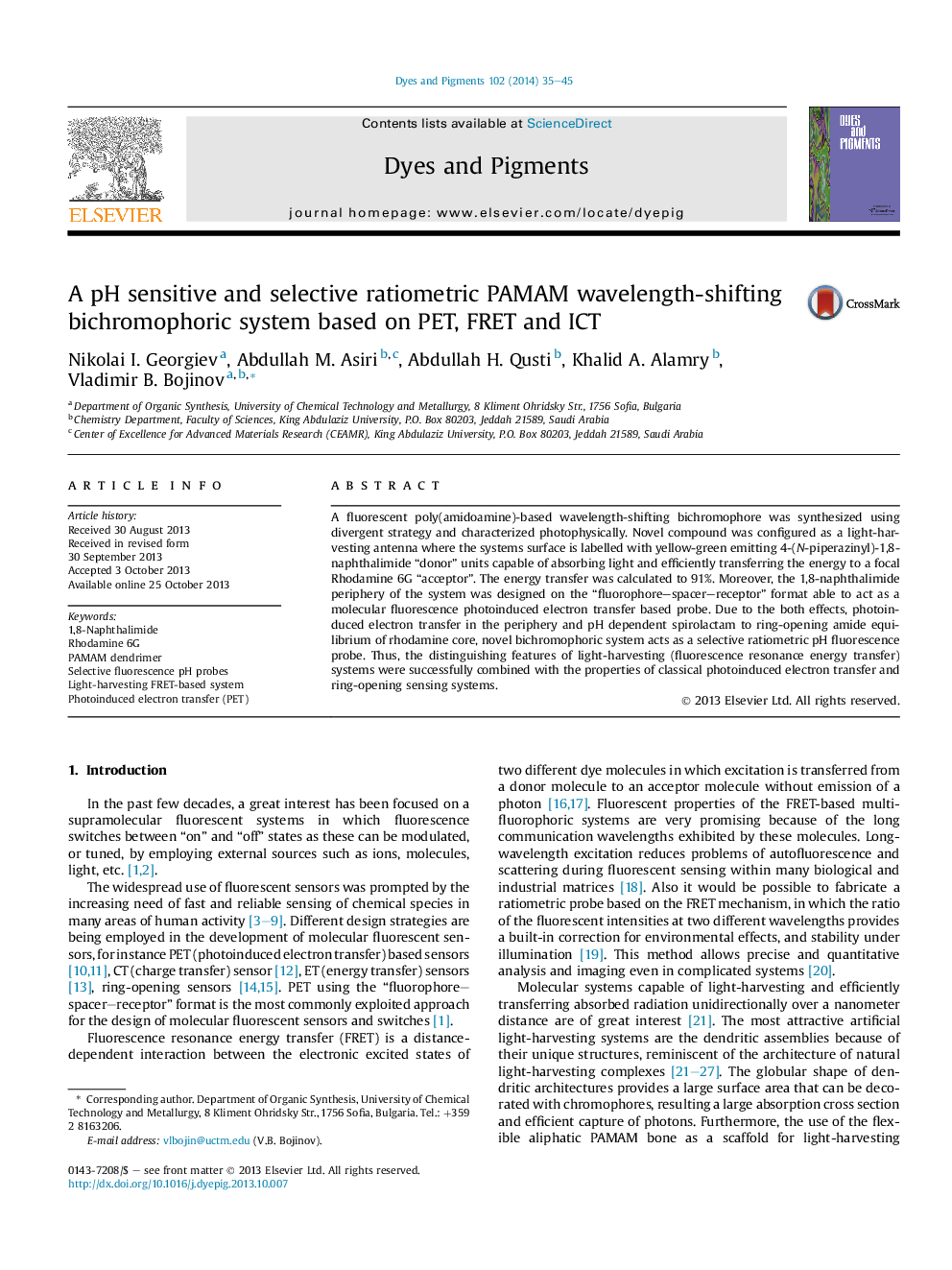| Article ID | Journal | Published Year | Pages | File Type |
|---|---|---|---|---|
| 176165 | Dyes and Pigments | 2014 | 11 Pages |
•PAMAM antenna decorated with Rhodamine 6G and 1,8-naphthalimides is synthesized.•Periphery of the antenna is designed as a PET based fluorescence probe.•System manifests excellent selective response to protons in aqueous medium.•Core emission of the systems is enhanced more than 30 times as a function of pH.•Bichromophoric system acts as a ratiometric fluorescent probe in complex samples.
A fluorescent poly(amidoamine)-based wavelength-shifting bichromophore was synthesized using divergent strategy and characterized photophysically. Novel compound was configured as a light-harvesting antenna where the systems surface is labelled with yellow-green emitting 4-(N-piperazinyl)-1,8-naphthalimide “donor” units capable of absorbing light and efficiently transferring the energy to a focal Rhodamine 6G “acceptor”. The energy transfer was calculated to 91%. Moreover, the 1,8-naphthalimide periphery of the system was designed on the “fluorophore–spacer–receptor” format able to act as a molecular fluorescence photoinduced electron transfer based probe. Due to the both effects, photoinduced electron transfer in the periphery and pH dependent spirolactam to ring-opening amide equilibrium of rhodamine core, novel bichromophoric system acts as a selective ratiometric pH fluorescence probe. Thus, the distinguishing features of light-harvesting (fluorescence resonance energy transfer) systems were successfully combined with the properties of classical photoinduced electron transfer and ring-opening sensing systems.
Graphical abstractFigure optionsDownload full-size imageDownload as PowerPoint slide
